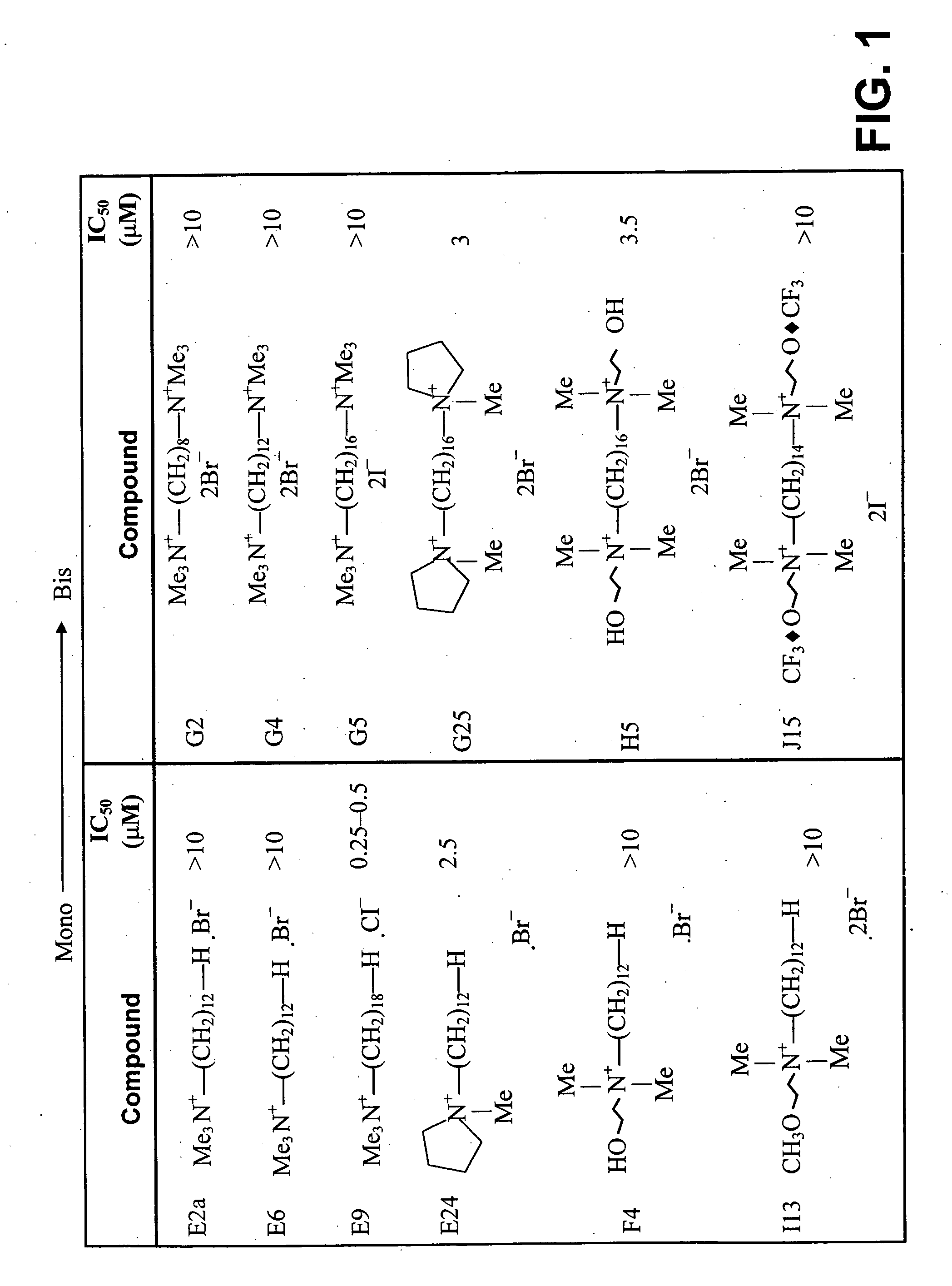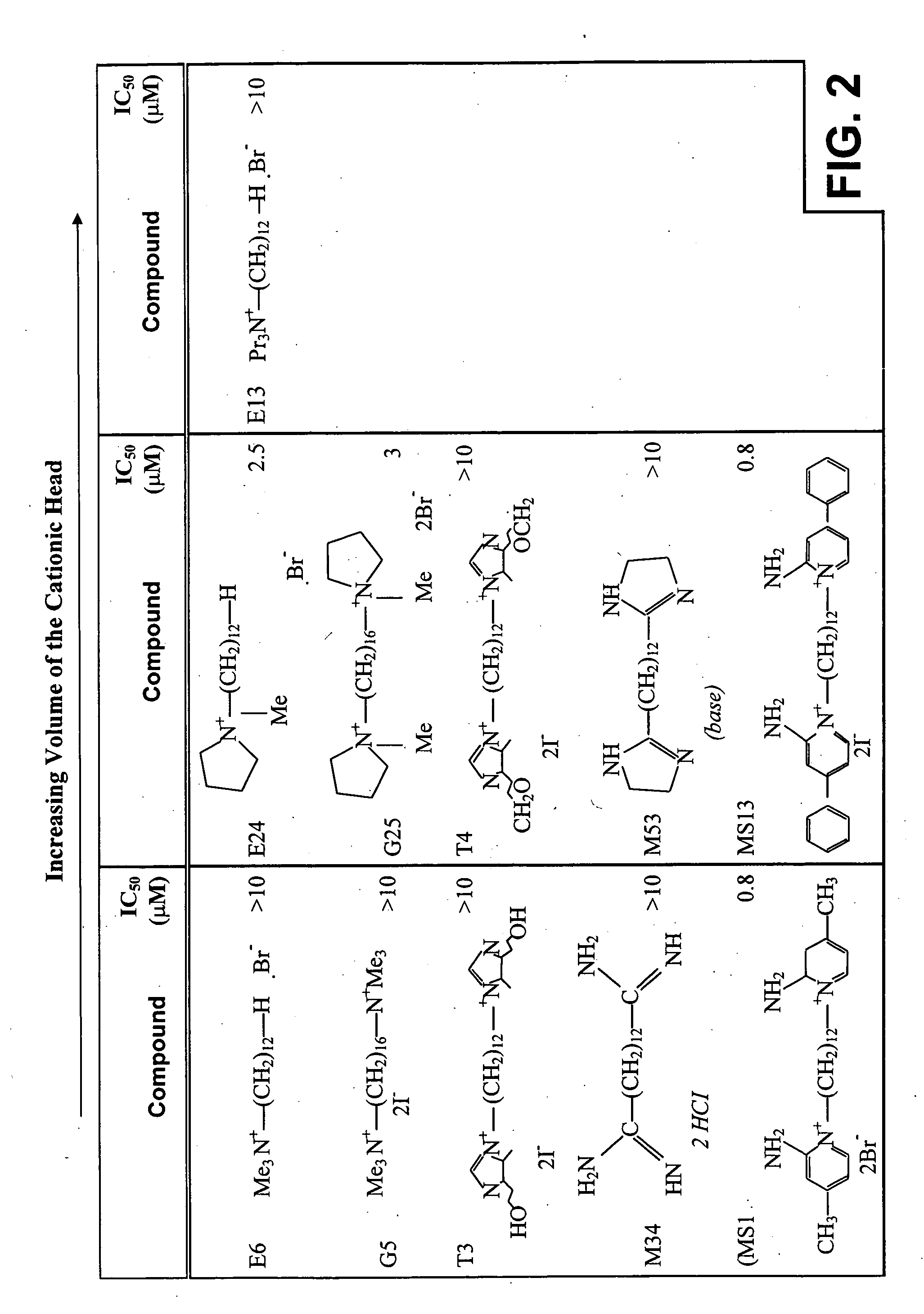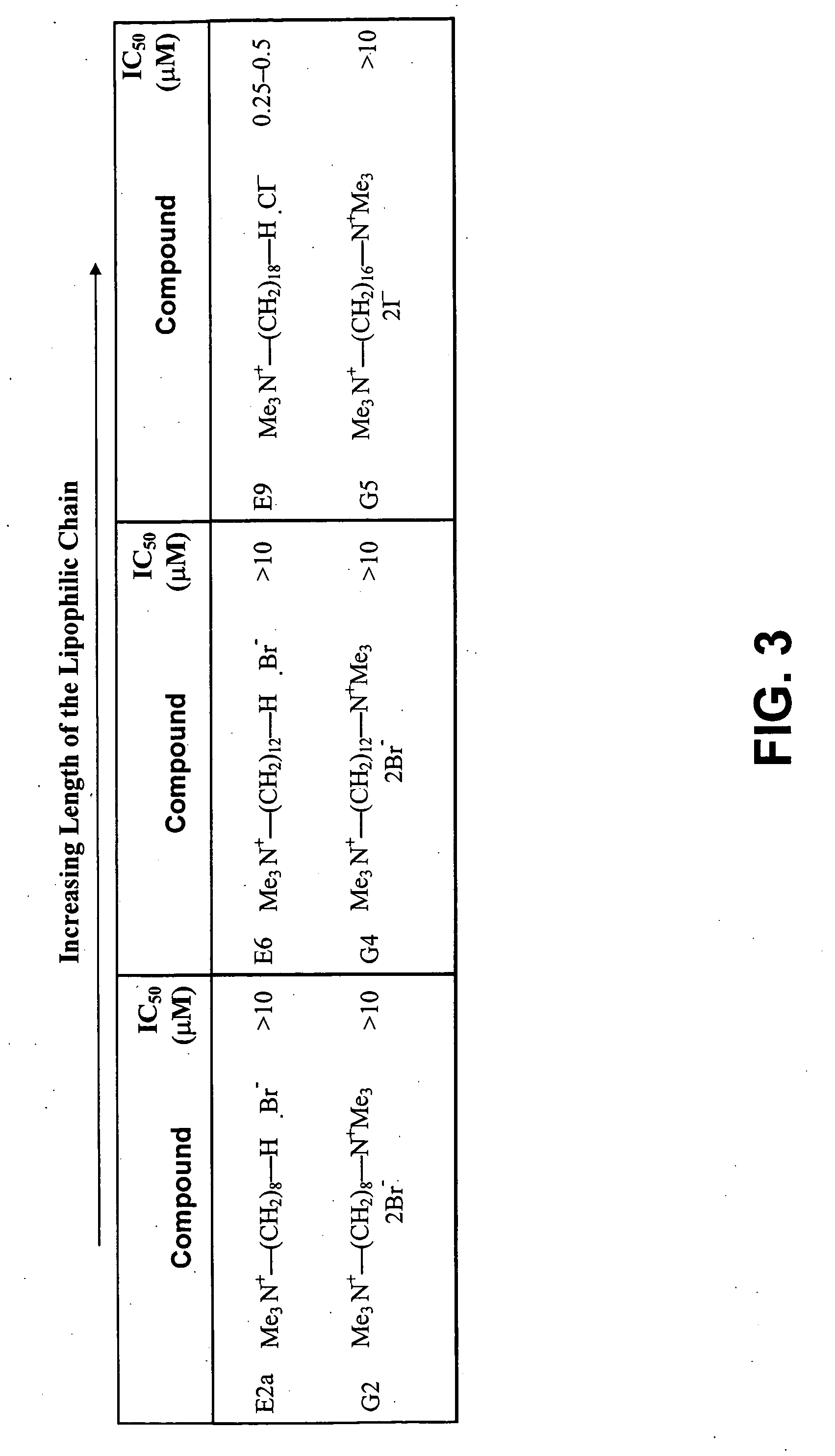Alkylammonium compounds as antifungal and antitrypanosomal agents
a technology of alkylammonium compounds and antifungal agents, which is applied in the field of alkylammonium compounds as antifungal and antitrypanosomal agents, can solve the problems of limiting the use of systemic infections, cell death, and membrane function, and achieves the effects of improving the delivery of one or more active ingredients, improving the hydrophilicity or lipophilicity, and improving the delivery
- Summary
- Abstract
- Description
- Claims
- Application Information
AI Technical Summary
Benefits of technology
Problems solved by technology
Method used
Image
Examples
example 1
Inhibition of Growth of S. cerevisiae by Choline Analogs
[0166] To assess the effect of choline analogs on the in vitro growth of S. cerevisiae in vitro, wild-type strains W303 and BY4741 were inoculated at 105 cells / ml in a rich medium (YPD containing yeast extracts, peptone and glucose) in the presence of increasing concentrations of various choline analogs and incubated at 30° C. for 24 h. Growth inhibition was assessed by measuring the OD600 and comparing it to that of the wild-type strain grown under the same conditions in absence of choline analogs. Twenty-one analogs including first, second and third generation (E2a, E6, E9, E13, E24, F4, G2, G4, G5, G14, GI5, G25, H5, L1, L4, M34, M53, MS1, T3 and T4) compounds (provided by Dr. Henri Vial, City, Country) were tested (FIG. 4). The choice of the compounds was such that they represent all possible structural features introduced during the optimization process for enhancing antimalarial activity as determined using the combinato...
example 2
Role of Duplication of the Polar Head Group
[0167] Mono- (E2a, E6, E9, E24, F4 and 113 compounds) and Bis(G2, G4, G5, G25, H5 and J15 compounds) quaternary ammonium compounds (FIG. 1) were used to test any possible correlations between duplication of the polar head group and the anti-fungal properties of the compounds. As shown in FIG. 2, only E9, G25 and E24 inhibited S cerevisiae growth. Duplication of the polar head group of E9 as in E24 resulted in a complete loss of activity. This suggested that compounds with a single quaternary ammonium group are more effective in yeast. Although duplication of the N,N-dimethyl group in F4 resulted in a compound, H5, with better efficacy, the alkyl chain in H5 is longer and it is likely that combination of both effects resulted in better potency. No major difference in IC50 values was observed between E24 and G25, although the latter possesses a duplication of the head group containing a cyclic tetramethylene. These findings suggest that when...
example 3
Role of the Bulk of the Cationic Head
[0168] The importance of the volume of the polar head group was determined by comparing the effect of E6, G5, T3, M34, MS 1 compounds and that of their derivatives E24 / E 13, G25, T4, M53 and MS13, respectively (FIG. 2). Substitution of two of the methyl groups of E6 by a cyclic tetramethylene (E24) resulted in an improved potency of the compound. Similar results were seen when the cyclic tetramethylene group was duplicated as in G25. However, when the three methyl groups of E6 were substituted by three propyl groups (E13) no improvement was detected. It seems from these results that the volume of the cationic head does not affect the potency of the compound, which may relate more to the nature of the substitution.
PUM
| Property | Measurement | Unit |
|---|---|---|
| weight percent | aaaaa | aaaaa |
| weight percent | aaaaa | aaaaa |
| weight percent | aaaaa | aaaaa |
Abstract
Description
Claims
Application Information
 Login to View More
Login to View More - R&D
- Intellectual Property
- Life Sciences
- Materials
- Tech Scout
- Unparalleled Data Quality
- Higher Quality Content
- 60% Fewer Hallucinations
Browse by: Latest US Patents, China's latest patents, Technical Efficacy Thesaurus, Application Domain, Technology Topic, Popular Technical Reports.
© 2025 PatSnap. All rights reserved.Legal|Privacy policy|Modern Slavery Act Transparency Statement|Sitemap|About US| Contact US: help@patsnap.com



